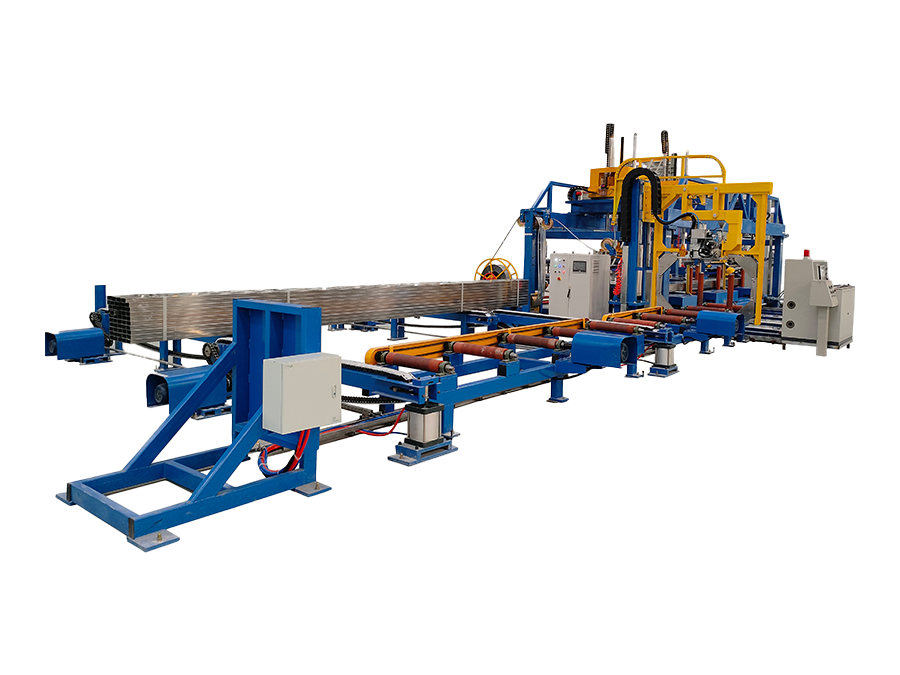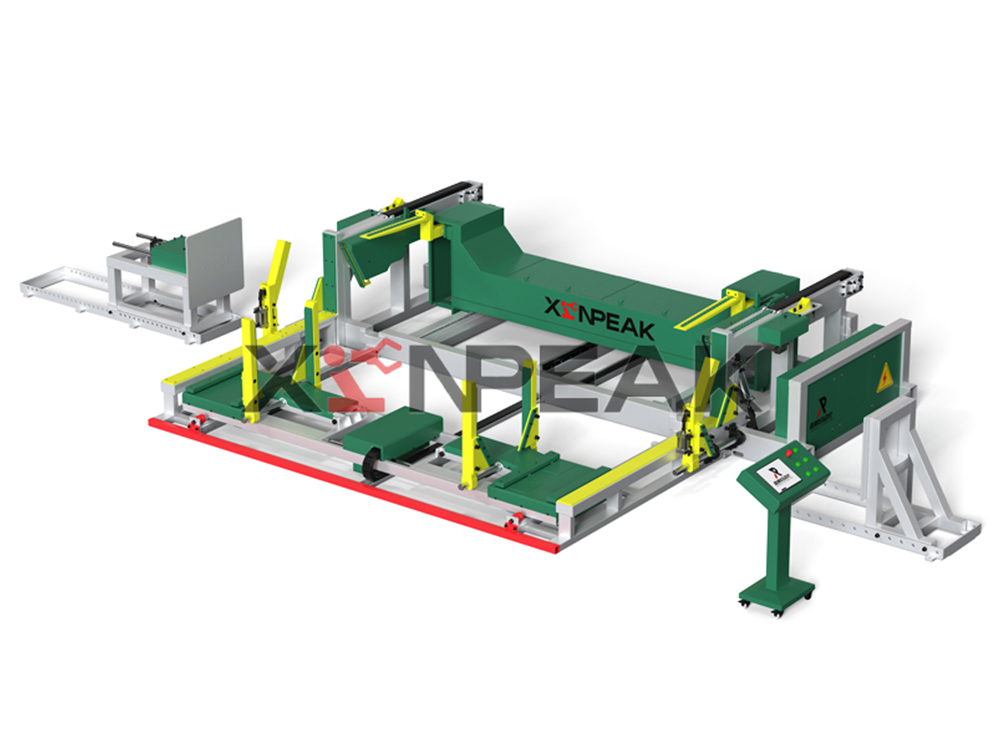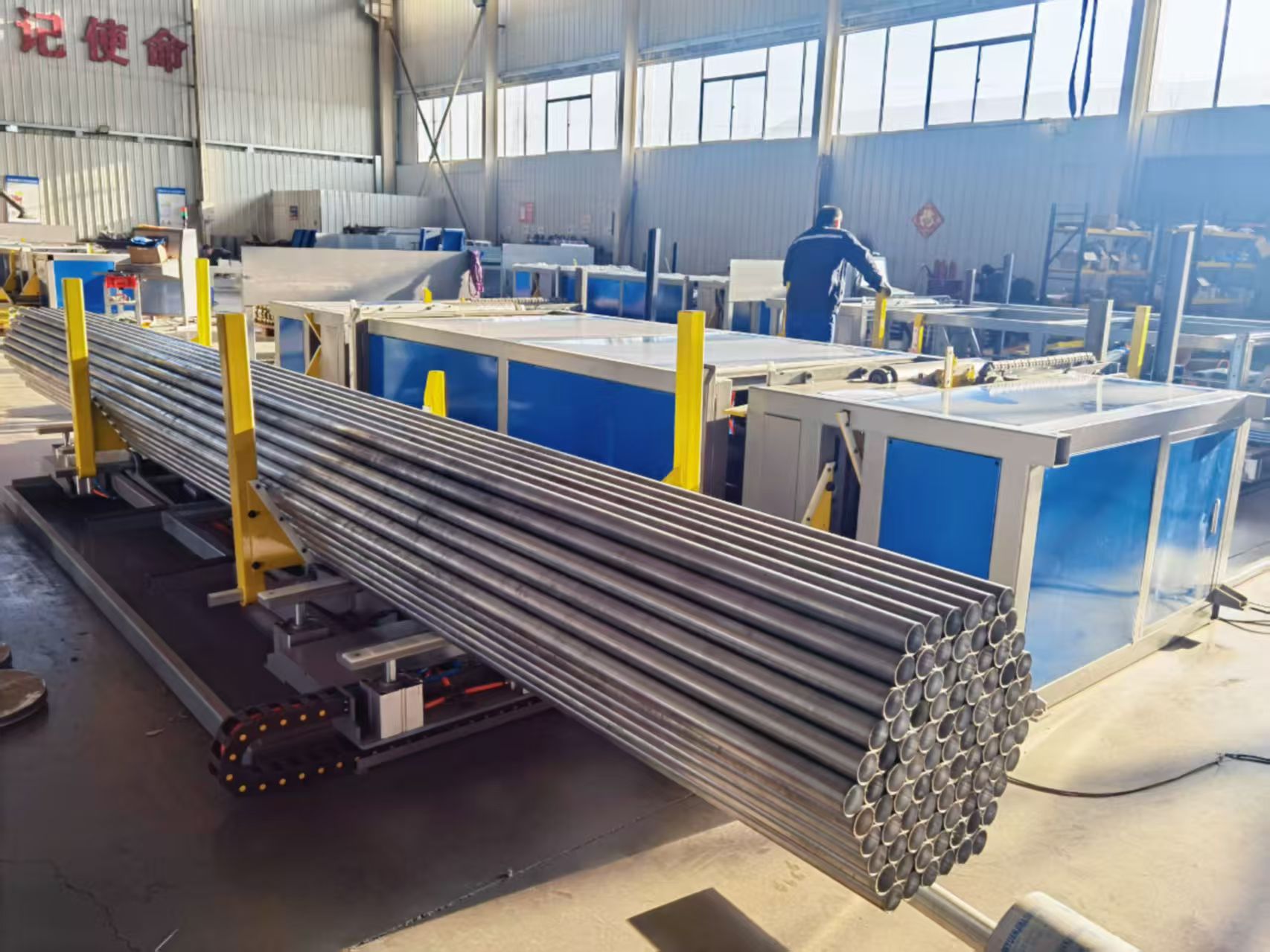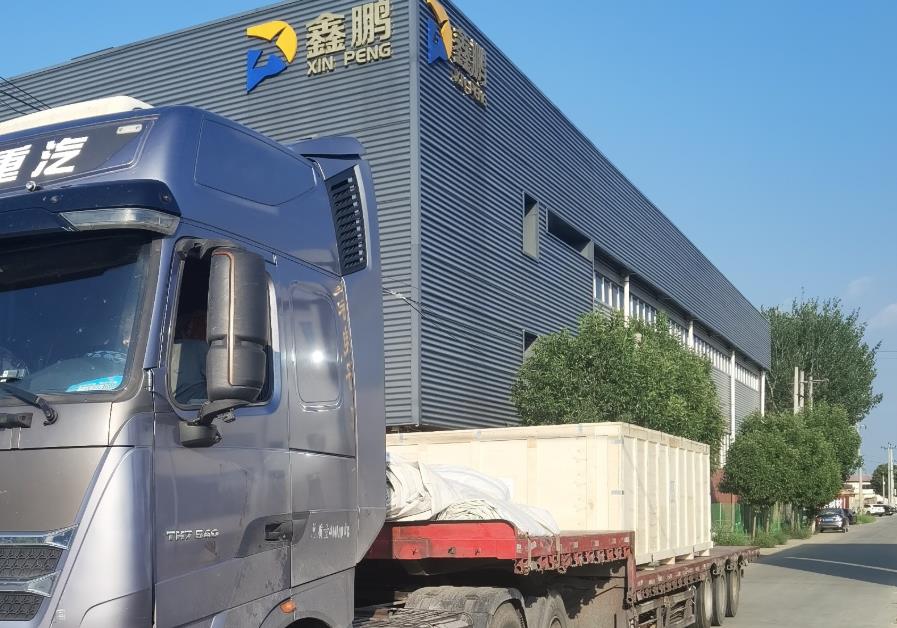Online
Precautions for using steel pipe palletizer
2025-08-09
When using a steel pipe palletizer, comprehensive management is required, including operational specifications, equipment maintenance, safety precautions, environmental adaptation, and personnel training, to ensure efficient and stable operation and personnel safety. Specific precautions are as follows:
I. Operating Specifications and Procedures
1. Strictly Follow the Operating Manual
Before operation, carefully read the equipment manual and familiarize yourself with the startup, operation, shutdown, and emergency stop procedures to avoid improper operation that could damage the equipment or cause personal injury or death.
For example, manual adjustment of the gripping mechanism or the position of the steel pipes while the machine is operating is prohibited. The machine must be shut down before any operation.
2. Parameter Setting and Adjustment
Adjust palletizing parameters such as gripping force, number of stacking layers, and spacing based on the steel pipe specifications (diameter, length, and weight) to ensure stable palletizing.
Parameter modifications must be performed through the control panel or host computer. Do not arbitrarily modify PLC programs or sensor parameters.
3. Material Preparation and Inspection
Ensure that the steel pipe surface is free of oil, impurities, or sharp protrusions to prevent slippage or damage to the equipment during gripping. Check the levelness of the steel pipe stacking area to prevent tilting or collapse due to uneven ground during palletizing.
II. Equipment Maintenance and Care
1. Daily Cleaning and Lubrication
Clean dust, oil, and steel pipe residue from the equipment surface daily to prevent dust accumulation from affecting sensor accuracy or corroding mechanical components.
Regularly lubricate moving parts such as guide rails, chains, and gears to reduce wear and extend service life.
2. Inspection and Replacement of Key Components
Gripping Device: Check the wear of the grippers, suction cups, or magnets, and promptly replace aging or damaged components to prevent unstable gripping that could cause steel pipes to drop.
Sensors: Regularly calibrate position sensors, vision sensors, and weight sensors to ensure data accuracy. For example, clean the lens of the vision sensor to prevent blurring.
Electrical System: Check cables and plugs for loose or damaged parts to prevent short circuits or electrical leakage.
3. Regular Maintenance Plan
Establish a monthly and quarterly maintenance plan, including replacing hydraulic oil and filters, and checking the operating status of the motor and reducer. Maintain a maintenance log to track historical equipment issues and provide a basis for preventive maintenance.
III. Safety Measures
1. Physical Guards
Install safety light barriers, guardrails, or gates to prevent personnel from entering the equipment's operating area. For example, when the gate is opened, the equipment automatically shuts down.
Place warning signs at the handling device and palletizing area to remind operators to maintain a safe distance.
2. Emergency Stop Function
Ensure the emergency stop (E-Stop) button is clearly located and easily accessible, and regularly test its response speed (typically, it should trigger a shutdown within 0.5 seconds).
Do not disable or bypass the emergency stop function, as this may result in serious safety hazards.
3. Electrical Safety
Ensure the equipment is properly grounded to prevent static electricity or leakage that could cause fire or electric shock.
Use standard power outlets and cables to avoid overloading.
IV. Environmental Compatibility Requirements
1. Temperature and Humidity Control
Avoid operation in extreme temperatures (e.g., below -10°C or above 50°C) to prevent freezing of the hydraulic system or overheating of electrical components. Excessive humidity may cause metal parts to rust or sensors to malfunction. Maintain a dry environment (relative humidity ≤ 85%).
2. Dust and Corrosive Gas Protection
In dusty workshops, install dust covers or air filters to reduce dust intrusion into the equipment.
Avoid operating in environments with corrosive gases (such as acid mist or salt spray), or use equipment with anti-corrosion coating.
3. Spatial Layout Optimization
Ensure sufficient operating space (typically ≥ 1 meter) around the equipment for maintenance and emergency evacuation.
Ensure a smooth transition between the conveyor line and the palletizer to prevent steel pipes from becoming stuck or falling.
5. Personnel Training and Management
1. Operator Training
All operators must undergo professional training to master the equipment's principles, operating procedures, and emergency response methods.
Regular refresher training should be conducted to refresh safety knowledge and operational skills.
2. Maintenance Personnel Qualifications
Maintenance personnel must possess basic electrical and mechanical knowledge and hold relevant qualifications (such as an electrician's license).
Non-professionals are prohibited from disassembling or repairing core equipment components. 3. Strengthening Safety Awareness
Improve employee safety awareness through case studies and safety drills, such as simulating emergency response to a falling steel pipe scenario.
Establish a safety reward and punishment system, penalizing violations and rewarding employees who identify potential hazards.
VI. Abnormal Handling and Emergency Plans
1. Common Troubleshooting
Grasping failure: Check sensor signals, gripping force settings, and gripper wear.
Pallet tilt: Adjust palletizing parameters or check floor flatness.
Equipment noise: Immediately stop the machine and inspect gears, bearings, or chains for damage.
2. Emergency Plan Development
Develop emergency plans for accidents such as fire, electric shock, and mechanical injuries, clearly defining evacuation routes and rescue procedures.
Regularly practice emergency plans to ensure employees are familiar with the procedures.
Contact Us
You can contact us through the following four methods. We will reply to your inquiry within 2-8 hours after receiving it!
Call Us
Send Email
Leave a Message
Add WeChat or WhatsApp







